Disclosure: We may earn commissions if you purchase products after clicking on a link from our site.
Do you want to be good at understanding deer behavior and habits? Do you want to take your deer hunting to another level with first-hand knowledge of deer behavior and habits? To know deer behavior and habits, you must understand their keen senses, diet shifts, resting spots in thickets, and social interactions. Discover how white-tailed deer use their keen senses and social interactions to navigate their environment, but there’s one behavior during the rutting season that will leave you intrigued.
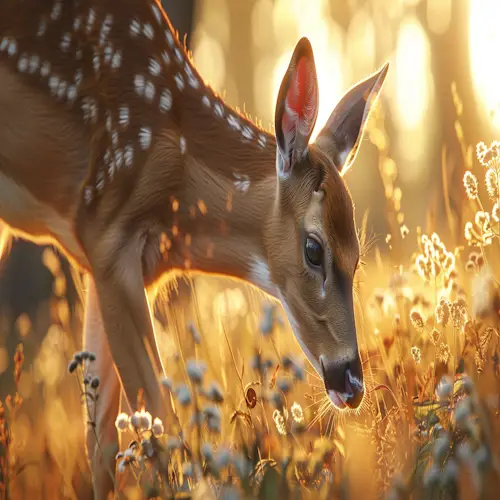
Table of Contents
Key Takeaways
- Deer have an acute sensory perception, relying on hearing, vision, and olfactory cues.
- Seasonal dietary variations include grasses, forbs, acorns, and crops.
- Resting in dense thickets near food sources and seeking seclusion during midday.
- Rutting season involves social hierarchy, active doe searching, and mating rituals.
- Bucks drink 3-5 quarts of water daily, bed close to water sources, and visit before feeding.
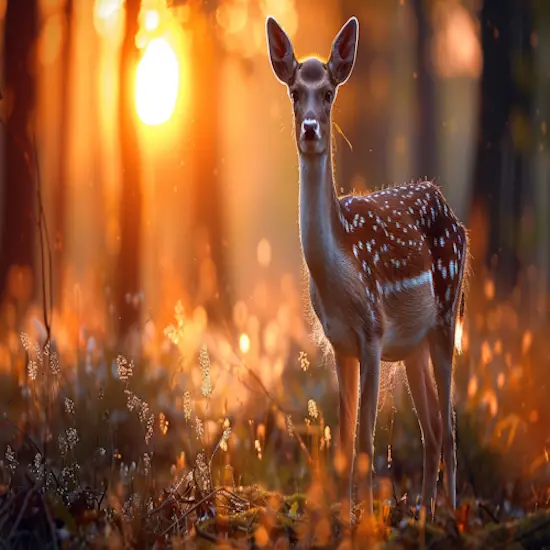
Understanding Deer Behavior and Habits
During the rutting period, mature deer assert dominance in fights. Watch for tail positions, ear movements, and body signals as they convey messages. Breeding time sees older bucks actively pursuing mature does. Mature bucks drink 3 to 5 quarts of water daily while rutting periods lead to increased movement and midday activity. Focus on rutting areas, consider moon phases, and use water sources strategically when hunting. Exploring these aspects can offer insight into deer behavior and habits.
Sensory Perception
How do deer perceive the world around them? You may ask? Their hearing sensitivity allows them to detect even the faintest sounds, while their binocular vision aids in depth perception and motion detection. Additionally, with up to 297 million olfactory receptors in their nostrils, whitetail deer have a keen sense of smell that influences their behavior and survival strategies.
Hearing Sensitivity
Deers exhibit remarkable hearing sensitivity, enabling them to detect faint noises in their environment. Their large ears, which can rotate independently, aid in pinpointing the source of sounds. White-tail deer are especially attuned to high-pitched noises, allowing them to detect predators or other deer movements from afar.
This significant sense of hearing serves as a vital survival mechanism, alerting them to potential dangers and helping them navigate their surroundings effectively. By being mindful of the noises you make while in the presence of deer, you can avoid startling them and increase your chances of observing their natural behaviors.
Understanding and respecting their heightened hearing capabilities is key to studying and appreciating these majestic animals.
Vision Capabilities
With exceptional hearing and limited color vision, whitetail deer possess remarkable sensory capabilities that shape their behavior and interactions within their environment. While deer have excellent motion detection and depth perception due to their binocular vision, their color vision is limited to blue and yellow, seeing the world in grayscale. This means adult bucks rely more on detecting movement and shapes rather than colors.
Their ability to detect predators or hunters is influenced by their vision capabilities, making it vital for a deer hunter to blend into their surroundings effectively. Understanding how deer perceive the world visually can help you anticipate their behavior and improve your hunting strategies for a successful outcome.
Olfactory Receptors
Utilizing their impressive sense of smell, whitetail deer rely on a vast number of olfactory receptors to navigate and perceive their surroundings effectively. The olfactory receptors in their nostrils play an essential role in their survival and behavior.
Here are four key points about deer olfactory receptors:
- Olfactory Receptor Count: Whitetail deer possess up to 297 million olfactory receptors, aiding in detecting predators and finding food.
- Sensitivity to Scents: Deer can detect scents from great distances, allowing them to sense danger and locate potential mates.
- Communication through Scents: Deer use scents to communicate with each other, especially during the rutting season.
- Memory Recall: Olfactory cues help deer remember the locations of food sources and potential threats, guiding their movements and behaviors.
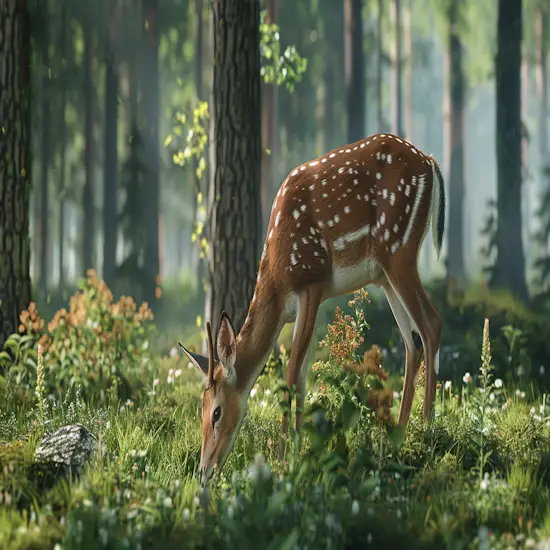
Dietary Patterns
When observing whitetail deer, understanding their dietary patterns becomes essential. Seasonal food preferences dictate their feeding habits, with grasses, forbs, and new growth being favored in spring and summer. Knowing that they’re most active at dawn and twilight sheds light on the timing of their feeding behaviors.
Seasonal Food Preferences
Understanding the seasonal food preferences of whitetail deer is essential for predicting their behavior and movements. Here are four key points to take into account:
- Spring and Summer: Whitetail deer feed on grasses, forbs, and new growth during these seasons.
- Fall: As seasons change, acorns, browse, and crops become significant parts of their diet.
- Winter: Deer may focus on woody browse and available crops.
- Nutrient-Rich Foods: Whitetail deer are attracted to food sources high in protein and energy, such as acorns and soybeans.
Dawn and Twilight Feeding
Deer exhibit distinct feeding patterns at dawn and twilight, focusing on consuming essential nutrients during these critical times of the day. At dawn, deer emerge from their bedding areas to feed on fresh growth, grasses, and forbs. This early morning feeding provides them with energy for the day ahead.
Twilight feeding is equally important, as deer return to forage before bedding down for the night. During this time, they often target acorns, browse, and crops. Understanding these feeding habits can help predict deer movements for hunting purposes.
Dietary Influences on Behavior
As you explore the feeding habits of adult deer during dawn and twilight, it becomes evident that their dietary preferences play a significant role in influencing their behavior and movements throughout the day. Understanding what whitetail buck eat can help you predict their behavior and plan your hunting strategies effectively.
- Deer are herbivores, consuming grasses, forbs, and new growth in spring and summer.
- Their diet shifts to acorns, browse, and crops as seasons change.
- Deer are most active at dawn and twilight, known as crepuscular.
- Predicting their movements requires knowledge of their dietary patterns and preferred food sources.
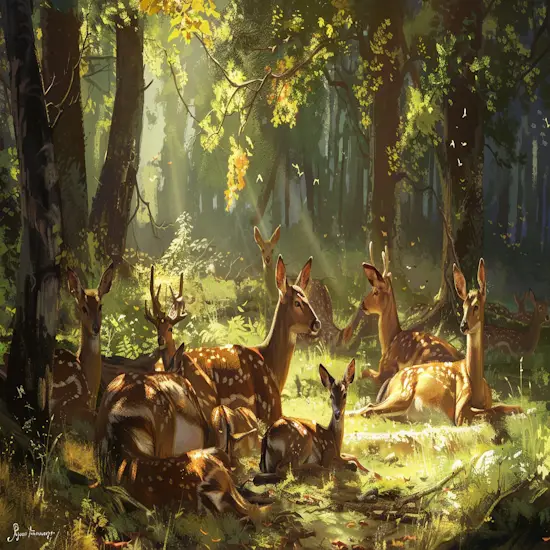
Resting Behavior
When it comes to understanding deer’s resting behavior, it’s crucial to focus on their preferred resting locations, midday resting patterns, and secluded sleeping areas. Knowing where deer choose to rest can provide valuable insights into their behavior and movements. Exploring these aspects can enhance your hunting strategies and success.
Preferred Resting Locations
Seeking seclusion and security, mature whitetail deer prefer resting in dense thickets and tall vegetation. Here are four key points about their preferred resting locations:
- Dense Thickets: Whitetail deer seek out dense thickets for resting to conceal themselves from predators and feel secure.
- Tall Vegetation: Tall vegetation provides cover and a sense of safety for a big buck while it rests.
- Sheltered Areas: Deer often choose resting spots in sheltered areas to shield themselves from harsh weather conditions.
- Proximity to Food: Resting locations are typically close to food sources, allowing deer to easily shift from resting to grazing.
Midday Resting Patterns
Resting during midday, mature whitetail deer exhibit specific patterns in selecting their resting locations. Typically, wary bucks seek out areas with dense cover such as thickets and tall vegetation to rest undisturbed. These locations provide security and protection from predators while allowing the deer to conserve energy during the heat of the day.
It’s common to find deer resting in shaded areas close to their feeding grounds, making it easier for them to switch back to grazing as the afternoon approaches.
Understanding these midday resting patterns can be beneficial for deer hunters looking to anticipate deer movements and plan their hunting strategies accordingly without disturbing the deer during their resting periods.
Secluded Sleeping Areas
To guarantee a peaceful night’s rest, mature whitetail deer often retreat to secluded areas with dense cover for protection and security. These secluded sleeping areas serve as safe havens where deer can relax without disturbances.
Here are four key points about secluded sleeping areas:
- Protection: Dense cover offers concealment from predators and harsh weather conditions.
- Security: Secluded locations provide a sense of security, reducing stress and promoting restful sleep.
- Privacy: Deer prefer solitude while resting, choosing areas away from high human or animal activity.
- Comfort: Soft ground and natural bedding materials in secluded spots enhance the sleeping experience for deer.
Resting Behavior Insights
When deer choose their resting spots, they prioritize safety and seclusion above all else. These cautious creatures seek out wooded areas with dense cover, such as thickets and tall vegetation, to guarantee they are hidden from potential threats.
Understanding their resting behavior can provide valuable insights for deer hunters looking to anticipate deer movements. Deer typically rest during midday in secure locations before returning to grazing areas later in the afternoon.
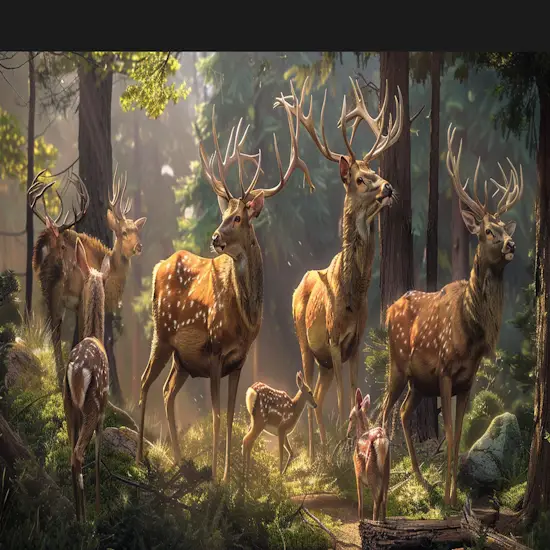
Social Dynamics
When observing mature whitetail deer, you’ll notice intriguing behaviors during the rutting season. Bucks showcase dominance through antler displays and fights, establishing a social hierarchy within the group.
Communication through body language plays an essential role in their interactions, aiding in understanding their dynamics.
Rutting Season Behaviors
During the rutting season, mature bucks exhibit distinctive behaviors that revolve around establishing dominance and seeking mating opportunities within their home range. Here are some key behaviors to note:
- Bucks actively search for does, often moving greater distances than usual.
- Decreased feeding leads to weight loss during this period.
- Midday movement increases due to mating pressures.
- Bucks strategically patrol specific areas like bedding zones and pinch-points for receptive does.
Understanding these rutting behaviors is essential for hunters looking to capitalize on the increased activity and movement of bucks during this intense period of breeding.
Social Hierarchy Displays
As mature bucks actively search for does and exhibit distinctive rutting behaviors, they also engage in social hierarchy displays that reveal intricate social dynamics among whitetail deer. Dominance among bucks is established through antler displays and fights during the breeding season, while does live in social groups with their young.
These pivotal structures play a vital role in predicting deer behavior, especially during the rut. Understanding the social interactions and dynamics within whitetail deer populations can provide valuable insights for hunters seeking to anticipate the movements and behaviors of deer.
Communication Through Body
Understanding the subtle cues and gestures deer use to communicate through body language is essential for hunters seeking to predict their behavior accurately. When observing deer in their natural habitat, pay close attention to their body language as it reveals valuable information about their intentions and emotions.
- Tail Position: A deer’s tail can indicate its level of alertness and readiness to flee.
- Ear Movement: Deer use their ears to communicate with each other and show their attentiveness to the surroundings.
- Body Posture: A deer’s stance can convey dominance, submission, or aggression towards others in the herd.
- Facial Expressions: Pay attention to the subtle facial expressions of deer, as they can reflect their mood and current state of mind.
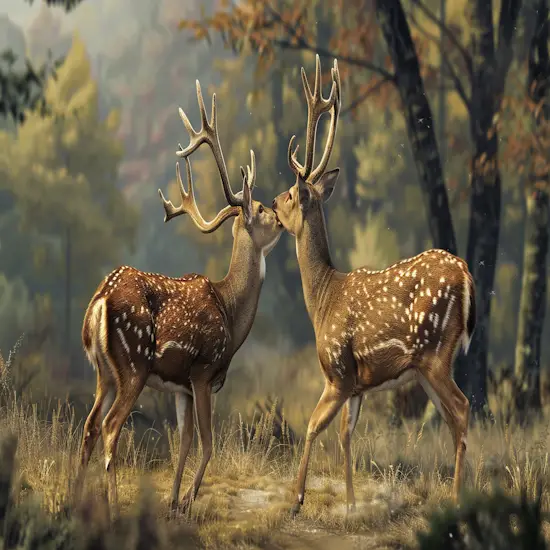
Breeding Season
During the breeding season, known as the rut, whitetail deer exhibit fascinating behaviors. Bucks engage in rutting behaviors to assert dominance and compete for mating opportunities. Understanding seasonal breeding patterns and mating rituals provides valuable insights into deer behavior.
Rutting Behavior Overview
Deer rutting behavior showcases the remarkable mating strategies employed by mature bucks. Here are four key insights into this fascinating breeding season behavior:
- Bucks actively search for does within their home range.
- During the rut, bucks feed less and may lose weight.
- Movement increases during midday due to mating pressure.
- Bucks cruise specific areas like bedding spots to find receptive does.
Mating Rituals Insights
As mating season approaches, mature bucks actively engage in intricate rituals to compete for mating opportunities. During this time, bucks exhibit rutting behaviors such as establishing breeding territories, vocalizing to attract does, and engaging in physical competitions with other bucks. Dominance displays, antler fights, and vocalizations are common sights and sounds during the breeding season.
Bucks tirelessly search for does within their home range, often losing weight due to decreased feeding. Midday movements increase as the pressure to find mates intensifies. Understanding these rutting behaviors and rituals is essential for hunters looking to capitalize on the increased deer activity during this period. By recognizing and interpreting these mating behaviors, hunters can strategically position themselves for a higher chance of success.
Seasonal Breeding Patterns
Opt for a solitary approach to understanding the seasonal breeding patterns of whitetail deer. During the breeding season, also known as the rut, deer behavior undergoes significant changes.
Here are four key aspects to keep in mind:
- Timing of the Rut: The rut typically occurs in the fall, varying slightly based on location.
- Breeding Behavior: Bucks engage in rutting behaviors such as marking territory and vocalizing to attract does.
- Territorial Nature: Bucks establish breeding territories and compete fiercely for mating opportunities.
- Mating Competition: Dominant bucks compete for does, often displaying aggressive behaviors to secure mating rights.
Understanding these seasonal breeding patterns is essential for hunters and wildlife enthusiasts alike.
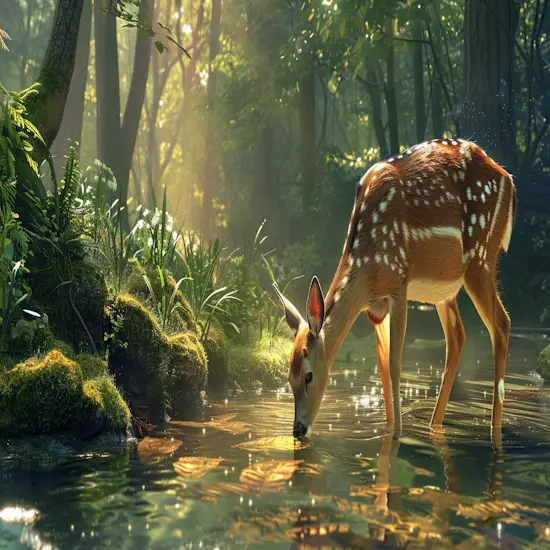
Water Consumption
For mature whitetail deer, maintaining adequate water intake is essential for their overall health and well-being. A 200-pound buck typically drinks 3 to 5 quarts of water per day, with intake varying based on temperature. Hotter days require more water consumption. Bucks often bed close to water sources, usually within 75 yards, and they tend to visit water before feeding in the evenings. Deer can even drink from small sources like rain puddles.
Understanding the proximity of water sources to bedding areas can be beneficial for hunting strategies. Water sources serve as key locations for observing deer behavior and planning hunting approaches. Observing deer behavior around water can provide valuable insights into their movements and habits. Be mindful of the importance of water sources when studying deer behavior and planning your hunting strategy.
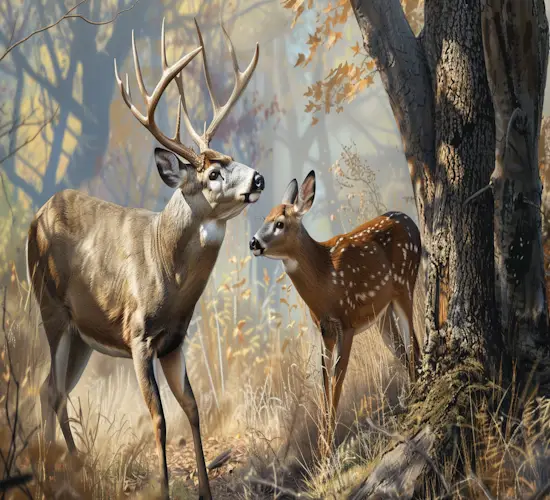
Rutting Behavior
During the rutting season, mature bucks exhibit unique behaviors as they seek out mature does within their range. Their tactics include cruising specific areas like bedding spots and pinch-points to locate receptive females.
Rut-induced buck movement increases, leading to more midday activity and less focus on working rubs and scrapes as they pursue mating opportunities.
Rutting Season Behavior
Understanding mature buck behavior during the rutting season is essential for successful deer hunting strategies. Here are some key points to take into account:
- Bucks actively search for does within their home range.
- Decreased feeding leads to weight loss in bucks during the rut.
- Increased midday movement occurs due to rutting pressure.
- Bucks focus on specific areas like bedding locations and pinch-points to find does.
Doe Seeking Tactics
When hunting mature bucks during rutting season, consider employing effective doe-seeking tactics to increase your chances of success. Mature bucks actively seek out mature does for breeding, making it important to understand their behavior. Bucks will patrol areas where does are likely to be found, such as bedding areas and pinch-points. They may vocalize to attract does and establish breeding territories.
Bucks tend to feed less during the rut and lose weight due to increased activity. Midday movement also rises as bucks search for receptive does. To increase your chances of encountering a mature buck during rutting season, focus on areas where does congregate, as bucks will be sure to follow.
Rut-Induced Movement
Explore how rutting behavior influences whitetail deer movement patterns. During the rut, bucks exhibit distinct behaviors that significantly impact their movements. Here’s what to know:
- Increased Activity: Bucks search for does within their range, leading to more buck movement.
- Decreased Feeding: Bucks feed less during the rut, prioritizing breeding activities.
- Midday Movement: Pressure from the rut causes bucks to move more during midday.
- Targeted Areas: Bucks focus on specific locations like bedding areas and pinch-points to find receptive does.

Hunting Strategies
When hunting during the rut, knowing where to find deer bedding areas can greatly improve your chances of success. Utilizing water sources strategically can give you an advantage in your hunting strategies. Considering moon phases may also play an essential role in predicting deer movement patterns.
Hunting During Rut
Curious about the most effective hunting strategies to employ during the rut? Here are some tips to help you maximize your chances of a successful hunt:
- Focus on Active Rutting Areas: Target areas where bucks are actively seeking does, such as travel corridors, funnels, and doe bedding areas.
- Use Decoys and Calls: Consider using decoys and calls to attract bucks in search of mates, increasing your chances of a shot.
- Patience is Key: During the rut, deer movement can be unpredictable. Stay patient and be prepared for sudden opportunities.
- Stay Scent-Conscious: Bucks are highly alert during the rut. Use scent-control measures to minimize your scent and avoid detection.
Bedding Area Tactics
Utilize strategic positioning near bedding areas to increase your chances of a successful hunt. Deer prefer secluded and secure sleeping spots surrounded by dense cover, making these areas prime locations for hunters. By understanding deer bedding habits, you can predict their movements and plan your hunting strategy accordingly.
Bucks often bed close to water sources, within about 75 yards, and tend to visit these areas before feeding in the evening. To capitalize on this behavior, consider setting up near water sources to intercept deer on their way to or from bedding areas.
Water Source Advantage
Moving on from the discussion on bedding area tactics, understanding the proximity of water sources to deer bedding spots can provide deer hunters with a strategic advantage in planning their hunting strategies for increased success. When considering water sources in your hunting strategies, keep these points in mind:
- Water Availability: Deer require water daily, making water sources a focal point for their movements.
- Evening Visits: Deer often visit water sources before heading to feed in the evenings, presenting an opportunity for hunters.
- Bedding Proximity: Bucks tend to bed close to water sources, offering a chance to intercept them near these areas.
- Hunting Strategy: Positioning yourself strategically near water sources can increase your chances of encountering deer during their daily routines.
Moon Phase Considerations
Considering the impact of moon phases on deer movement can enhance your hunting strategies for increased success. While some hunters believe that deer are more active during a full moon, research on this topic is ongoing.
Understanding how moon phases affect deer behavior may help you predict their movements more accurately. Deer may adjust their activity levels based on the moon’s brightness, potentially leading to different feeding and movement patterns.
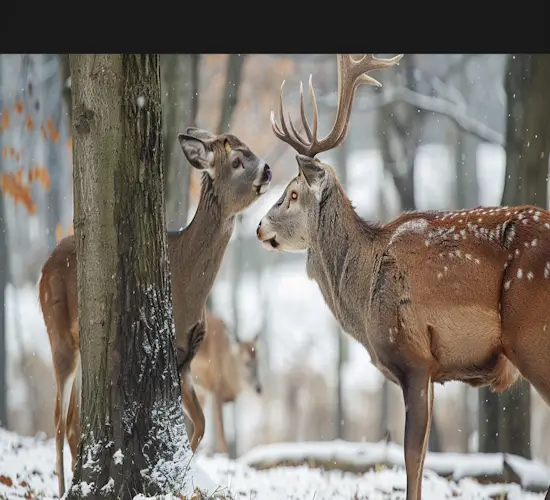
The Bottom Line
Understanding deer behavior and habits will make you a better hunter. It will help you plan and strategize better to accomplish your deer hunting objectives. You will understand why they do certain things and this will put you in a better position for hunting.
As you navigate the intricate world of whitetail deer, you uncover a tapestry of sensory perception, dietary patterns, and social dynamics.
Like a skilled artist blending colors on a canvas, you piece together the puzzle of their behavior. With each insight gained, you sharpen your hunting strategies and deepen your appreciation for these majestic creatures.
Enjoy the journey of understanding deer behavior and habits, and watch as the forest comes alive with secrets waiting to be revealed. You will be amazed how all the pieces suddenly make sense and fall into place. You can read how to plan a hunting trip out of state, how to hunt whitetail deer during the rut, and how to hunt deer on public land which are some articles that are most read.